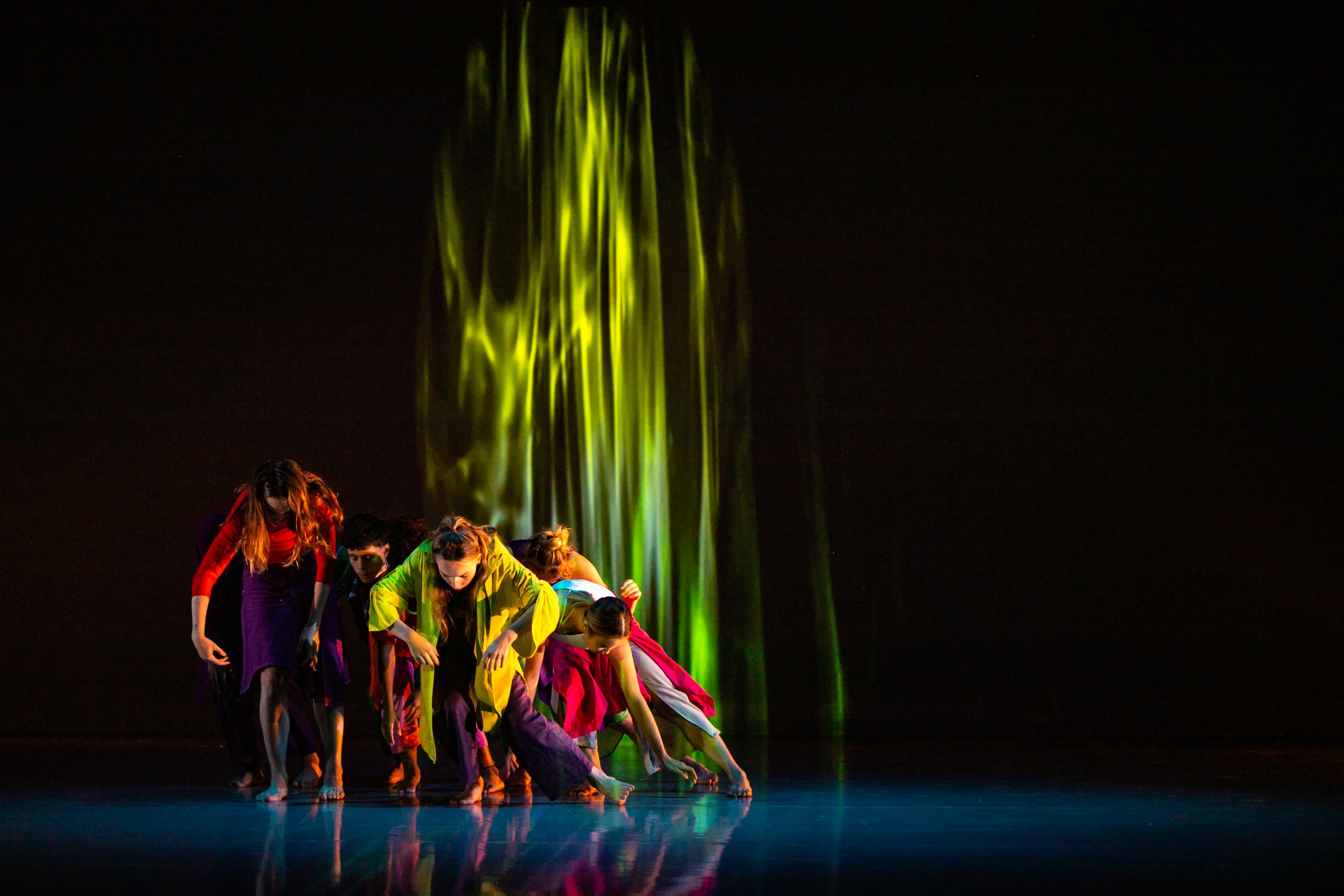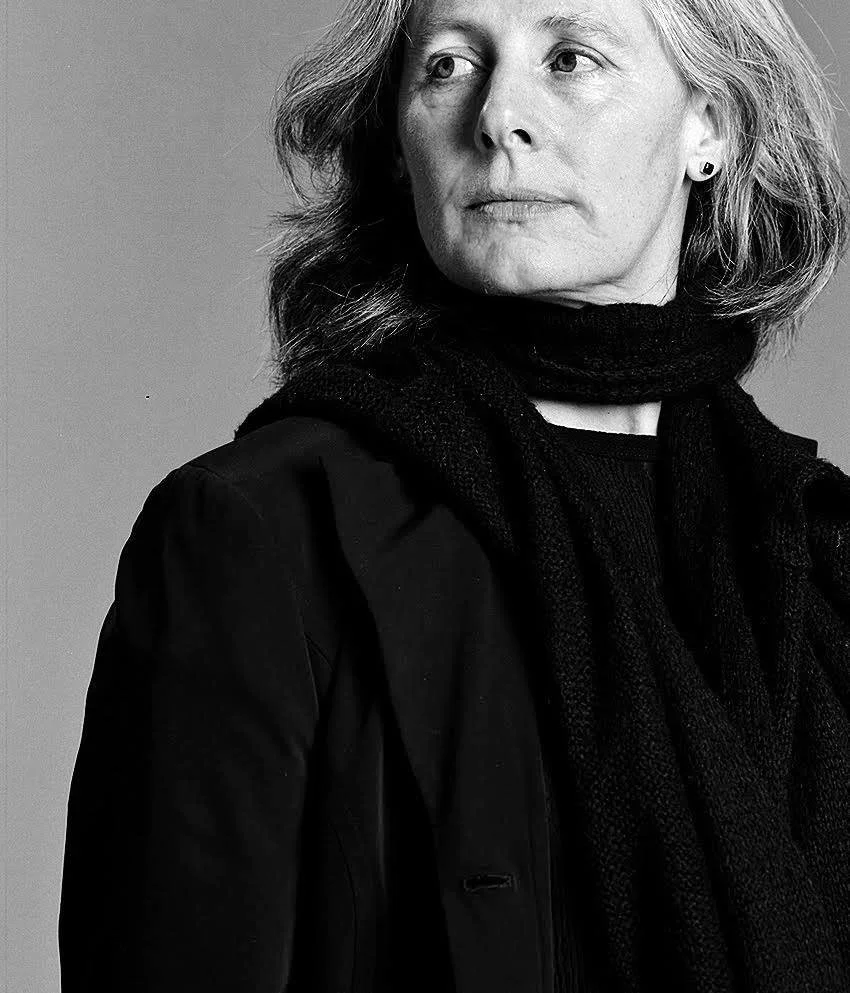Jennifer Mascall reflects upon dance's ability to take social action ahead of The Impossible Has Already Happened's Canadian premiere
Piece co-created with Footnote New Zealand Dance explores water as a symbol of environmental distress
The Impossible Has Already Happened. Photo by Caio Silva
Mascall Dance and Footnote New Zealand Dance present The Impossible Has Already Happened at the Anvil Theatre on October 27 at 7:30 pm
WATER IN ALL ways, shapes, and forms is at the centre of The Impossible Has Already Happened, Mascall Dance’s latest coproduction with Footnote New Zealand Dance.
Reminders of an imminent climate crisis flow throughout the piece in its multimedia elements. Lights made of ice drip slowly onto the dancers below, a narrator reads heartbreaking text written from the ocean’s point of view, and projected video footage immerses viewers in blistering landscapes of drought.
Jennifer Mascall, founder-artistic director of Mascall Dance, says that her own understanding of the power that water commands is rooted in an ocean boat voyage she often takes to reach an island cliff. But everyone’s dynamic with water is different, she notes, which is why her and co-choreographer Claire O’Neil brought their dancers’ personal experiences into play, too.
“We might have been four weeks into the creation, and we sat them down and we asked each of them what their relationship with water was,” Mascall says. “Two of them couldn’t swim. Two had had near-drowning experiences. One only liked to be in water that had walls on it, like a swimming pool. Another one only liked water when it was in a pond that had koi in it. The reactions to water were quite extreme amongst the group.”
Mascall and O’Neil first met back in 2019 during an international Dance Centre residency exchange called Space to Fail that brought together artists from Vancouver, New Zealand, and Australia. The pair hit it off, and the following year they received an invitation from Footnote New Zealand Dance to collaborate on a project—thus, The Impossible Has Already Happened was born.
The Impossible Has Already Happened. Photo by Caio Silva
The pandemic, which hit shortly thereafter, impacted much of the piece’s development. It was over Zoom calls that Mascall and O’Neil came to the conclusion of using art as a tool for social action, landing on the environment as a theme. Eventually, dancers from New Zealand and Vancouver would rehearse in their respective studios in front of massive 10 foot-tall screens so they could see each other, transferring their movements across the world.
Research became an important component of the work. The dancers collected stories tied to meaningful regions of the environment, professional writers were brought in to shape narrative, and Mascall’s expertise as a trained somatic practitioner helped translate the concept of water into fluidity within the body.
That research includes the aforementioned round-up of personal connections to water. One story of O’Neil’s in particular manifests itself strongly within the piece.
“Claire’s father is a sailor, and he had been part of a huge tropical cyclone while he was in a regatta,” Mascall explains. “There were 17 boats, and nine of them had to be rescued. And a video was made of it using live footage. It was a very extreme situation.”
The piece’s title, The Impossible Has Already Happened, is a quote from established writer-activist Rebecca Solnit. It’s not intended to be so much about foreboding doom, says Mascall. Rather, it’s meant to urge people to snap out of passivity, and take action in the present.
That message is conveyed using multidisciplinary elements—a creative landscape of spoken word, set design, and live music. Actor Tobias Macfarlane narrates, speaking from the ocean’s point of view. “We realized that it is a love story. It’s like the ocean is speaking to us and saying, ‘I’m leaving you. I was there for you,’” Mascall says of his words.
“I have used text in nearly every piece I’ve ever made, and I’ve made hundreds of pieces. The first piece was in 1974,” Mascall reflects. She notes that O’Neil incorporates text into many of her works, too, which led to the natural inclusion of narration in The Impossible Has Already Happened.
“It doesn’t begin with text, and it’s not about text—but text feels like it’s a necessary element in it,” she adds.
Jennifer Mascall. Photo by Yukiko Onley
New Zealand-based set designer Marcus McShane builds upon the heartbreak of a warming climate with a downright unique choice: frozen ice lights, which he can set to melt at whatever pace Mascall and O’Neil choose.
“We have them onstage, melting and dripping as though they are hourglasses,” Mascall says. “We hadn’t really used them at first, because we were so busy doing other things. And one day in New Zealand, we just turned all the lights out, and we hung the ice lights, and we said to the dancers, ‘What would you do with these?’ And one by one, they all went up and made an image with the light.
“And it was so beautiful. It does seem to be one of those things that refers to many others. So it refers to time, it refers to suspension. It refers to everything melting. It refers to this light that gives us heat, at the same time as making things really beautiful. It just has a multiplicity of references.”
The concept of a multi-referential prop carries over into another object in the show, too: the skeleton of a house. “The story of this house throughout, it seems to refer to finding a home, homelessness, destruction of houses, taking your house with you,” Mascall explains.
The array of clever props are complemented by a rich soundscape from New Zealand-based composer and sound artist Jason Wright. Plus, fiddler Kathleen Nisbet plays live, her harrowing notes carrying throughout as if they are a siren call urging audiences to reflect. Despite its sombre subject matter, Mascall says that pockets of humour incorporated in the piece allow audiences to fully grasp its concept.
The Impossible Has Already Happened marked its world premiere in New Zealand this March, at The Opera House in Wellington. Ahead of its upcoming Canadian debut, Mascall says the piece is constantly evolving to reflect environmental social action.
“We had an advisory panel of a Métis elder, an environmental activist, and a marine biologist, and we heard that the scientific facts are not registering with anybody,” Mascall shares. “The facts are getting more and more extreme, but they don’t seem to make a dent on people’s consciousness. And they realized that what people live for, or live with, or move from, are stories. And that’s what we can bring as artists, however abstract.”
















